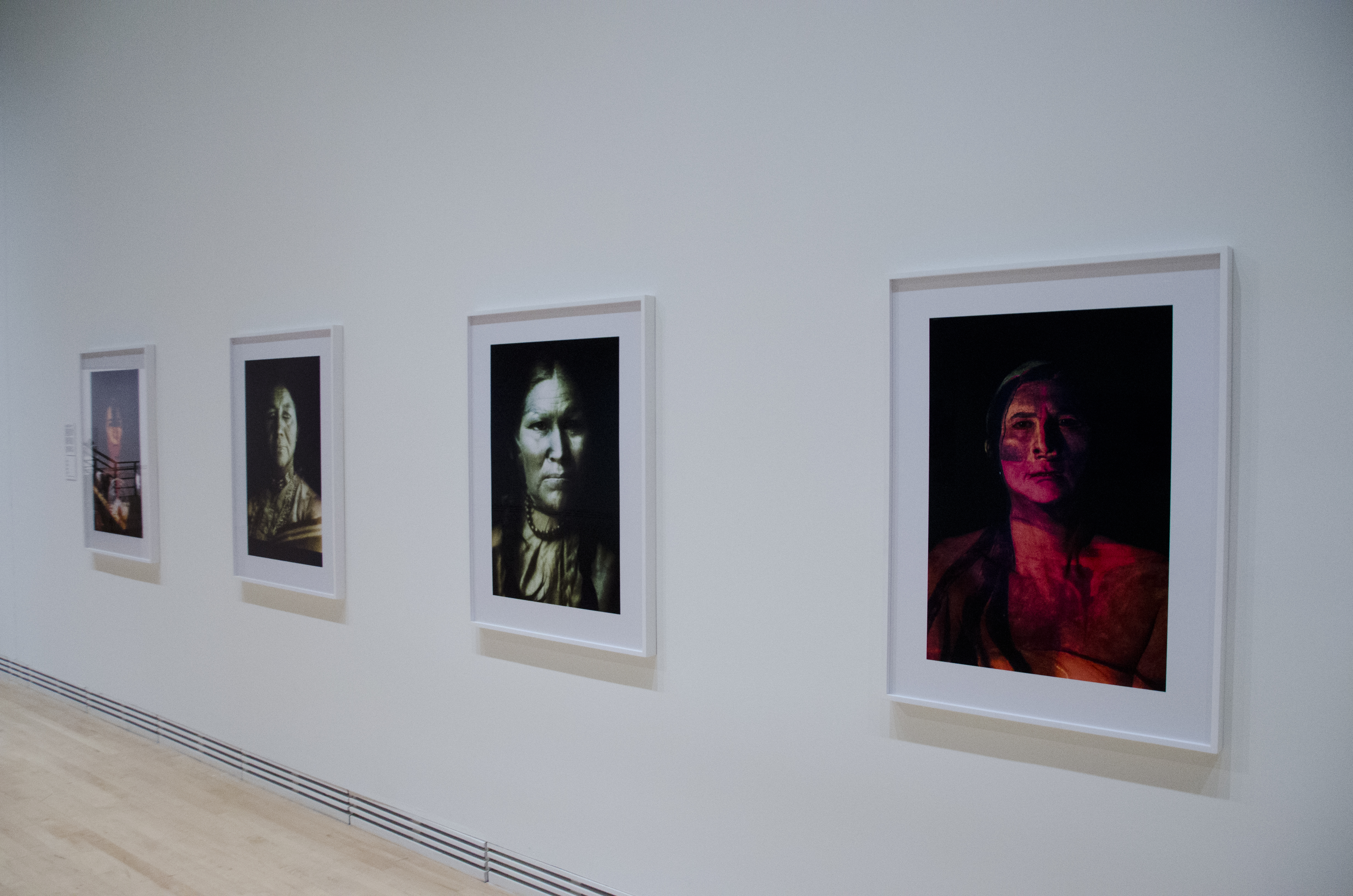Meryl McMaster, Maura Doyle, and Adrian Göllner enter their final week on display alongside a collection of Inuit art at the Carleton University Art Gallery (CUAG) summer exhibition, open until Aug. 28.
McMaster’s journey of identity through her photography titled Confluence, Doyle’s collection of contemporary works of pottery, and Göllner’s Masters of Fine Arts’s thesis on capturing time in material form are all on display at the gallery.
According to Heather Anderson, the CUAG curator, Doyle’s work is looking at different possibilities for the self in terms of how we might imagine ourselves if we could reinvent our history or sever our ties to people’s expectations.
“In each case in this series it’s very apparent how with her use of costuming and props, all of which she makes herself, the materiality that goes into their making is a very important part of her practice,” Anderson said. “[It] determines what kind of pose or character she might assume [in the photograph].”
McMaster’s Plains Cree and Euro-Canadian heritage is the driving force behind her work and her study of the extensive history of photographic representation of Indigenous peoples, according to CUAG’s website. The photographs serving as a record of her journey.
Doyle’s exhibition titled “the Vessel, that with fugitive Articulation answer’d, how deep is your love?” ties the ancient with the contemporary from its name to the fine details on the pots she presents. According to the CUAG website, “Doyle considers the making of pots as a collaborative effort between the pot, the potter, and over ten thousand years of history.”
“The title is a merger of a citation from a poem by Omar Khayyam [about a] boat, a ceramic vessel, a pot, merged with a pop lyric, ‘how deep is your love,'” Anderson said. “Doyle has been exploring the form of the pot, which has been a ubiquitous cultural object and something that people have been making for tens of thousands of years.”
Anderson said that Doyle uses humour to carry her message across, and added “[she is] playing upon conventions of how objects are shown in museums and departing from that.”
Anderson described Small Trinity, Göllner’s series, as an attempt to freeze time and present it to the public materializes as an index of an explosion. Having completed his pieces using clay, bronze, aluminum, and soil, the result is a display of diverse stunning visuals.
“[Göllner] set himself the goal of trying to capture the explosive blast that was equivalent of one one millionth of the first atomic bomb. He started at smaller increments doing that at the University of Ottawa but he soon realized it was getting kind of dangerous,” Anderson said.
She added Göllner approached the demolition unit at the Department of Defence, who backed him and helped him fulfill his art piece.
The fourth ongoing summer exhibition at the CUAG is Keeping Record: The Documentary Impulse in Inuit Art.
“Inuit art has often been described by critics as “memory art,” understood as having a seemingly apolitical focus on pre-contact life meant to appeal to the primitivist sensibilities of collectors in the South,” according to the CUAG website.
Anderson said the exhibition’s purpose is to depict various aspects of culture and tradition as a means of preserving that knowledge and passing it on; an act that’s vital to traditions that are threatened in terms of being able to carry over in the ways of contemporary living.
New Fall exhibitions are set to be unveiled on Sept. 12 at the CUAG.






